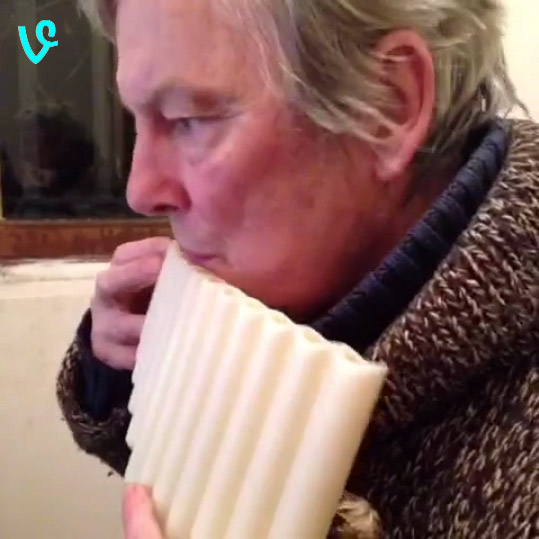One of the fun things about playing wholetone panpipes is the way they make short scales – not just the whole tone scale – ridiculously easy. Short scales are my name for a large family of interval arrays that includes the so-called symmetric scales, including the wholetone, diminished and augmented scales. Some short scales, such as {3 2 1} are not symmetric, in that upending the interval array gives you a different scale {1 2 3}. Other short scales, such as {3 2}, do not even factor into 12, and so do not make a neat octave-long scale when stacked. French composer Olivier Messiaen collected seven short scales and called them “modes of limited transposition“, kind of a wonky way of saying that you won’t get twelve different transpositions of them without many of them containing the same notes as each other. Curiously he left out the short scale {3 1}, or augmented scale as it is known to jazz players. Maybe he wanted to keep the number down to just seven dwarfs.
Claude Debussy is generally accepted as the pioneer of these babies, and is widely known for making the wholetone scale an accepted colour in the musical palette. But he didn’t stop there. In his composition for flute solo, posthumously titled Syrinx, he uses a variety of scales and short scales. In measure 13 below we see a descending {-1 -1 -1 -3} × 3 flourish. The {3 1 1 1} short scale thus mapped out is Messiaen’s fourth mode, And then in measure 16-19 the composer plays with a descending -1 -3 -1 figure beginning on a grace note within the triplets. He bounces it up, then down, a semitone, and then up and down again. What scale is he in? Or is he just having fun?
On the visual front, it’s worth taking a glance at the score with the mindset of someone who doesn’t read music all that well. With all those flats in the key signature countermanded by naturals and double flats, you would need to be a pretty good sight-reader to play it right first time. The notation camouflages a simple concept and bars access to rank beginners. It kicks something simple into the rough and makes it the preserve of the advanced student. I wouldn’t say it was deliberate mystification, but it perfectly illustrates the adage that the map is not the territory. The basic problem lies with the system of key-signature + accidentals, notating all notes as members of or deviations from a putative major scale or its Aeolian mode (here D-flat major or B-flat minor).
But now the wholetone panpipe and wholetone xylophone can put that right. With them, you can invite these friendly little dwarfs into your cabin, and let them loose on your imagination. And give them to your three-year-old to play with.
Follow me on Twitter @jazzpanflute







